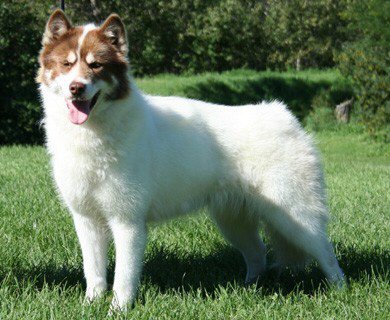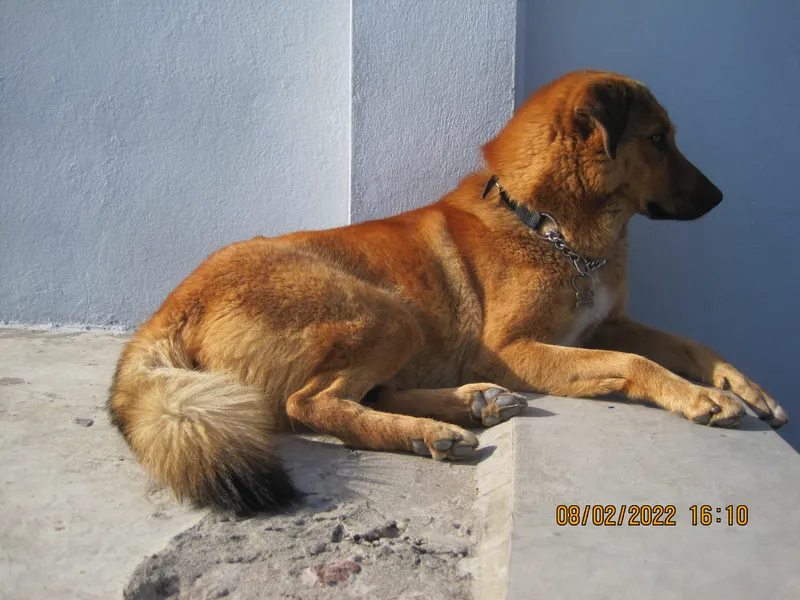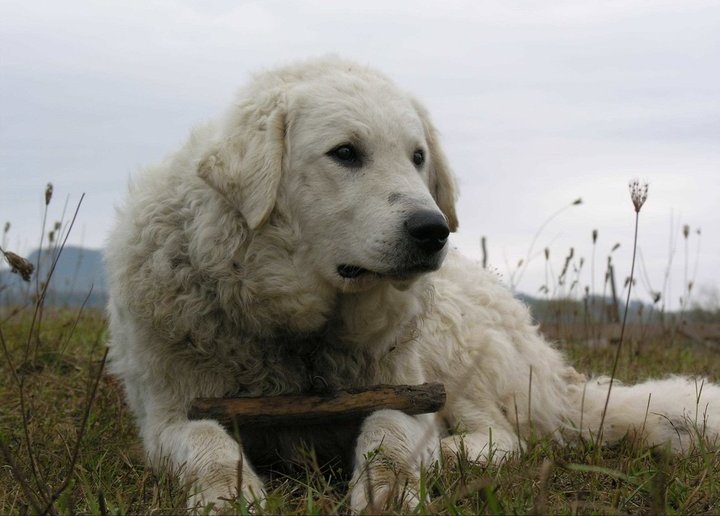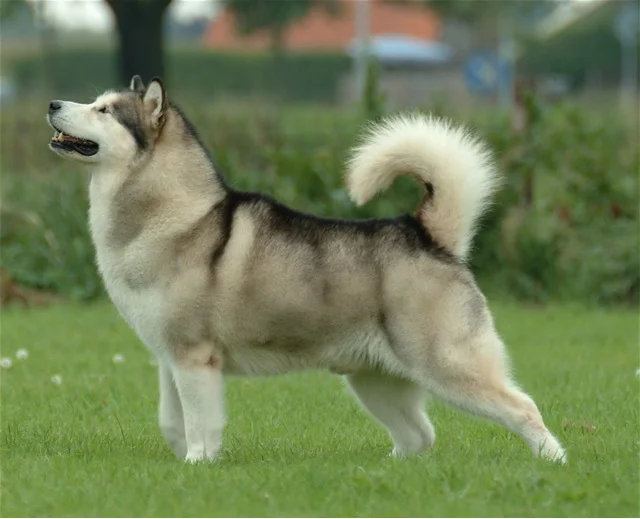Greenland Dog
The Greenland Dog is a powerful, ancient sled dog known for its strength, loyalty, and endurance. Ideal for active owners, they thrive in cold climates and require extensive exercise.
Overview
🐕Breed Overview
✨Key Traits
💡What Makes Greenland Dog Special
The Greenland Dog is characterized by its remarkable strength and endurance, making it an excellent working dog. They have a strong prey drive and may not get along well with other pets, particularly smaller animals.
Their loyalty and protective nature make them great companions for families, but they require a confident owner who can provide consistent training and socialization. Their independent streak can make training challenging, but with patience and dedication, they can become well-behaved members of the family.
Their thick double coat requires regular grooming, especially during shedding seasons, to keep them healthy and comfortable.
The Greenland Dog, also known as the Greenland Husky, is a powerful and ancient breed that has been a vital part of Arctic life for thousands of years. Originating from the coastal regions of Siberia and brought to Greenland by the first Inuit settlers, this breed is renowned for its strength, endurance, and ability to thrive in harsh conditions. With a broad, wedge-shaped head, muscular build, and a thick double coat, the Greenland Dog is well-equipped for its historical roles as a sled dog and hunting companion.
These dogs are characterized by their loyalty and protective nature, especially towards their families. They thrive in environments where they can engage in vigorous activities such as sledding, weight pulling, and hunting. Their high energy levels necessitate at least 120 minutes of exercise daily, making them best suited for active owners who can provide ample physical and mental stimulation.
Despite their independent streak, Greenland Dogs are affectionate and form strong bonds with their owners. They require a firm and confident handler to establish respect and ensure proper training. Socialization is crucial, as they may not always get along with other dogs, and their prey drive can lead them to chase smaller animals.
Living with a Greenland Dog means embracing an active lifestyle, as these dogs are happiest when they have a job to do. They are not ideal for apartment living and require space to roam and play. Grooming needs are moderate, with regular brushing to manage shedding, especially during seasonal changes.
Overall, the Greenland Dog is a remarkable breed that embodies the spirit of the Arctic, making it a perfect companion for those who appreciate their strength, independence, and working abilities.
🎉Fun Facts
Greenland Dogs are known for their endurance and can pull heavy sleds over long distances.
They have a unique 'ulo' marking on their shoulders, resembling a traditional Greenlandic knife.
This breed has been used in numerous polar expeditions, showcasing their strength and reliability.
Breed Characteristics
Family & Friends
Good Behavior
Get Up & Go
Household Harmony
Temperament & Personality
✨Key Traits
🐕Core Temperament
The temperament of the Greenland Dog is shaped by its history as a working breed. They are strong-willed and independent, requiring a confident owner to guide them.
While they can be aloof with strangers, they are incredibly loyal and protective of their families. Their high energy levels and need for physical activity make them well-suited for active households.
They thrive in environments where they can engage in work or play, and they require consistent training and socialization to develop into well-rounded companions. Their natural instincts may lead them to chase smaller animals, so supervision is essential.
💫Personality Profile
Greenland Dogs are known for their strong and independent personalities. They thrive in environments where they can work and engage in physical activities.
While they can be aloof with strangers, they are incredibly loyal to their families and protective of their loved ones. Their high energy levels require consistent exercise and mental stimulation, making them best suited for active owners.
They can be stubborn and require a firm, confident handler to establish respect and obedience. Socialization from an early age is crucial to ensure they develop into well-rounded companions.
🔊Vocal Tendencies
Greenland Dogs are generally not excessive barkers, but they will vocalize when necessary, especially when alerting their owners to potential threats or when playing. Their barking is usually moderate, and they may howl or make other vocalizations typical of northern breeds. While they are not known for being overly noisy, they do enjoy expressing themselves, particularly during play or when excited.
Affection & Social Traits
Energy & Activity
Communication Style
Care Requirements
🏃♂️Exercise Requirements
Daily Exercise
Greenland Dogs are highly active and require a significant amount of exercise to maintain their physical and mental health. Ideally, they should engage in at least 120 minutes of vigorous exercise daily. This can include activities such as sledding, running, hiking, and playing fetch.
Given their history as sled dogs, they thrive in environments where they can pull sleds or engage in similar activities. Puppies require shorter, more frequent bursts of exercise to avoid overexertion, while senior dogs may need gentler activities to accommodate their stamina. Regular exercise not only helps in weight management but also reduces behavioral issues stemming from boredom or pent-up energy.
Insufficient exercise can lead to destructive behaviors, anxiety, and obesity, making it crucial for owners to provide ample physical activity.
Preferred Activities
🏠Living & Adaptability
Space Requirements
Greenland Dogs require ample space to thrive, ideally a large yard or access to open areas where they can run and play. They are not well-suited for apartment living due to their size and high energy levels.
In rural settings, they can enjoy the freedom to roam and engage in their natural instincts. Owners in smaller spaces should ensure they can provide sufficient exercise and mental stimulation through regular outings and activities.
Lack of space can lead to frustration and destructive behaviors, so it’s essential to create an environment that allows for their active lifestyle.
Climate Preference
🍲Feeding Guide
Schedule
Food Types
Portion Size
Special Nutritional Needs
Greenland Dogs require a diet rich in protein and fat to support their high energy levels and working capabilities. It's important to choose high-quality dog food formulated for active breeds.
Owners should monitor their dog's weight and adjust portions accordingly, especially during seasonal changes when exercise levels may vary. Supplements such as omega fatty acids can help maintain a healthy coat and skin.
✨Grooming Requirements
Grooming Overview
The Greenland Dog has a thick double coat that requires regular grooming to keep it healthy and free of mats. The outer coat is water-repellent and coarse, while the inner coat is soft and wool-like.
Regular brushing, at least once a week, is necessary to manage shedding, which occurs heavily during seasonal changes. During shedding periods, daily brushing is recommended to reduce loose hair and prevent matting.
Bathing should be done as needed, typically every few months, to maintain coat cleanliness without stripping natural oils. Owners should also check and trim nails regularly and clean ears to prevent infections.
Care Schedule
Brush weekly; during shedding season, brush daily; bathe every 2-3 months.
Health Profile
⚕️Health Care
Regular health care is crucial for the longevity of Greenland Dogs. Routine veterinary check-ups, vaccinations, and preventive treatments for parasites are essential to maintain their health.
Early detection of health issues can lead to more effective management and treatment. Owners should also be vigilant about their dog's weight and activity levels, as obesity can lead to various health problems.
A balanced diet tailored to their energy needs, along with regular exercise, is vital for keeping them healthy throughout their life stages.
Health Issues Overview
⏳Average Lifespan
Genetic Factors
Genetics play a vital role in the lifespan of the Greenland Dog. As one of the oldest breeds, they have a history of genetic diversity, which can help mitigate the risk of hereditary health issues.
However, responsible breeding practices are essential to maintain this diversity and reduce the prevalence of genetic disorders. Potential owners should seek reputable breeders who conduct health screenings and prioritize the overall health of their breeding stock.
Understanding the genetic background of a dog can help owners anticipate potential health issues and take proactive measures.
Living Conditions
The lifespan of a Greenland Dog can be significantly influenced by its living environment. Dogs that are kept in active households with plenty of exercise and mental stimulation tend to live longer, healthier lives.
Exposure to harsh weather conditions can also impact their health, as they are bred for cold climates. Proper shelter and care during extreme temperatures are essential.
Additionally, a balanced diet and regular veterinary care play crucial roles in promoting longevity. Dogs that are well-socialized and engaged in family activities often exhibit better mental health, contributing to a longer lifespan.
🏥Common Health Issues
Hip Dysplasia
Warning Signs
🔬Diagnosis
X-ray examination by a veterinarian.
💊Treatment
Medications, weight management, and in severe cases, surgery.
📝Management Tips
Maintain a healthy weight, provide joint supplements, and engage in low-impact exercises.
Progressive Retinal Atrophy (PRA)
Warning Signs
🔬Diagnosis
Veterinary eye examination.
💊Treatment
No cure; management focuses on adapting the environment.
📝Management Tips
Regular veterinary check-ups and monitoring for vision changes.
Hypothyroidism
Warning Signs
🔬Diagnosis
Blood tests to measure thyroid hormone levels.
💊Treatment
Lifelong thyroid hormone replacement therapy.
📝Management Tips
Regular monitoring and medication as prescribed by a veterinarian.
🛡️Preventive Care
🔬Hip Evaluation
Evaluates the dog's hip joints for dysplasia, a common issue in large breeds.
📅 At 12 months and annually thereafter.
🔬Ophthalmologist Evaluation
Tests for genetic predisposition to eye diseases, including PRA.
📅 At 12 months and every 2 years thereafter.
🔬Thyroid Function Test
Measures thyroid hormone levels to detect hypothyroidism.
📅 Annually after 5 years of age.
Training
🧠Intelligence & Trainability
💪Work Drive
Greenland Dogs have a strong work drive and require regular tasks to keep them mentally stimulated. Activities such as sledding, weight pulling, and other dog sports are ideal for fulfilling their need for work.
Engaging them in these activities not only provides physical exercise but also satisfies their instinctual need to perform tasks. Without sufficient mental and physical stimulation, Greenland Dogs may become bored and exhibit undesirable behaviors.
Owners should strive to incorporate a variety of activities into their routine to keep their dogs engaged and happy.
⚠️Training Considerations
Greenland Dogs can present several behavioral challenges, primarily due to their independent nature and strong instincts. They may exhibit stubbornness during training, requiring a firm and consistent approach from their owners.
Socialization is crucial to prevent aggression towards other dogs, as they may not always be friendly with unfamiliar canines. Additionally, their high prey drive can lead them to chase smaller animals if not properly managed.
To overcome these challenges, owners should engage in early socialization, positive reinforcement training, and provide ample physical and mental stimulation to keep the dog engaged and focused.
📝Training Tips
Training a Greenland Dog requires patience, consistency, and a firm hand. Positive reinforcement methods work best, as these dogs respond well to rewards for good behavior.
Start training early, focusing on basic commands and gradually introducing more complex tasks. Socialization with other dogs and people is essential to develop a well-rounded temperament.
Engaging in activities that align with their natural instincts, such as pulling sleds or participating in dog sports, can enhance their training experience. Owners should be prepared for a challenge, as Greenland Dogs are not the easiest to train, but with dedication, they can become well-behaved companions.
History & Heritage
📜Origin Story
The Greenland Dog's story begins in the Arctic regions of Siberia, where ancient dogs were bred by the Sarqaq people who migrated to Greenland. These dogs were essential for survival, used for hunting seals and polar bears, and for transportation across icy landscapes.
As the Inuit people settled in Greenland, they brought these dogs with them, and the breed adapted to the extreme conditions of the Arctic. The Greenland Dog's robust physique and thick double coat enabled it to thrive in frigid temperatures, making it an invaluable companion for the Inuit.
Throughout history, the breed has been featured in numerous polar expeditions, showcasing its strength and endurance. Today, the Greenland Dog remains a symbol of the Arctic's rich cultural heritage and the enduring bond between humans and dogs in harsh environments.
⏳Development History
The Greenland Dog is one of the oldest breeds, with origins tracing back to the first Inuit settlers who brought dogs to Greenland approximately 4,000 to 5,000 years ago. Archaeological evidence suggests that these dogs were used for sledding and hunting, adapting to the harsh Arctic environment.
Over centuries, the breed has remained relatively unchanged, valued for its strength and ability to work in packs. The Greenland Dog was recognized in various expeditions, particularly during the Age of Exploration, where it played a crucial role in the success of polar expeditions.
Despite its historical significance, the breed has faced challenges in modern times, including a decline in numbers and recognition.
🛡️Purpose & Historical Role
Historically, the Greenland Dog was bred for specific purposes, primarily as a sled dog and a hunting companion. Its strength and stamina made it ideal for traversing difficult terrains and pulling heavy sleds.
The breed was also used for hunting large game, including seals and polar bears, which were vital for the survival of the Inuit people. In modern times, while still used for traditional purposes, the Greenland Dog has also become popular in dog sports and recreational activities, showcasing its versatility and athleticism.
🏺Cultural Significance
The Greenland Dog holds a significant place in the culture and history of the Arctic regions, particularly among the Inuit people. As a traditional sled dog, it has been integral to the survival and lifestyle of these communities, aiding in hunting and transportation across harsh terrains.
The breed's endurance and strength have made it a symbol of resilience in the face of extreme conditions. In modern times, the Greenland Dog continues to be celebrated for its historical role in exploration and its contributions to Arctic expeditions, including those led by famous explorers like Fridtjof Nansen and Roald Amundsen.
Conservation Status
This breed is less common but has stable populations in certain regions.









